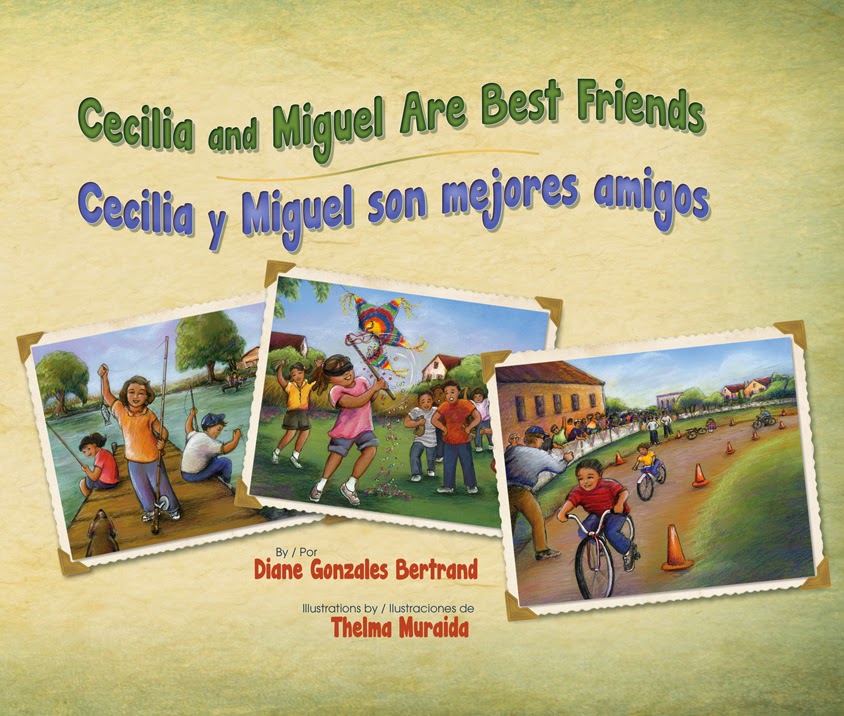Author: Diane Gonzales Bertrand
Illustrator: Thelma Muraida
Publisher: Arte Público / Piñata Books
Age Range: 4+
(According to this website, the "modern" gift for 47 years is books, so this is working out better than expected.)
This week, I'm reviewing a sweet book that reminds me of my parents, who met in first grade, grew up together, dated in high school, broke up when they went to different colleges, reunited a couple of years later, got married, and eventually wound up with me.
Cecilia and Miguel Are Best Friends / Cecilia y Miguel son mejores amigos, a dual language picture book by San Antonio natives Diane Gonzales Bertrand and Thelma Muraida, presents a similar story. In third grade, Cecilia and Miguel begin a friendship that weathers various challenges and frustrations. Readers watch as the duo grow up and remain close, even when Cecilia excels at fishing while Miguel tangles and breaks his line, Miguel wins a bike race and Cecilia has to quit due to flat tires, and they play for different teams in high school. Eventually, the two go off to different colleges, but even distance can't keep them apart -- they marry and later have twins, who love to look at their parents' photographs and hear the story of the friendship that created a family.
Everything in this book just fits. I love how Thelma Muraida frames her warm, gentle illustrations in jagged photograph borders so that each page becomes an entry in the scrapbook that Cecilia and Miguel share with their children. I love how Miguel gives Cecilia bunny ears in their third grade class picture, only to get bunny ears himself in their formal wedding portrait.
Everything in this book just fits. I love how Thelma Muraida frames her warm, gentle illustrations in jagged photograph borders so that each page becomes an entry in the scrapbook that Cecilia and Miguel share with their children. I love how Miguel gives Cecilia bunny ears in their third grade class picture, only to get bunny ears himself in their formal wedding portrait.
That's what you get, Miguel ;)
I love how Diane Gonzales Bertrand includes several common Mexican-American cultural practices that remind me of growing up in Texas -- piñatas, cascarrones, quinceañeras. And I love how the story emphasizes how friendship is important in relationships, whether romantic, familial, or platonic. When I have kids, I'll definitely be reading this one to them at bedtime.
Furthermore, teachers of English and/or Spanish learners can use the dual language text to help their students build vocabulary and grammar skills. The words on each page follow the same pattern: "Cecilia and Miguel are best friends, even when... / Cecilia y Miguel son mejores amigos, aun cuando..." Reading these repetitive phrases throughout the book can allow children to internalize these words and grammatical structures, making it easier to understand them and even use them in conversation and writing.
So if you're looking for a last-minute holiday gift for a child or teacher, consider Cecilia & Miguel -- it's the perfect addition to a home or classroom library. Enjoy!




























